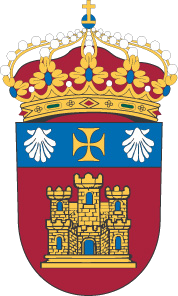| dc.contributor.author | Miguel Barrio, Rodrigo | |
| dc.date.accessioned | 2025-04-08T11:54:22Z | |
| dc.date.available | 2025-04-08T11:54:22Z | |
| dc.date.issued | 2024-05 | |
| dc.identifier.issn | 0211-979X | |
| dc.identifier.uri | http://hdl.handle.net/10259/10421 | |
| dc.description.abstract | El presente trabajo aborda la coyuntura actual que atraviesa el Consejo General del Poder Judicial, llevando a cabo un examen exhaustivo de su estructura, funciones y modalidad de designación de los vocales y funciones esenciales. De esta manera, se identifican los desafíos a los que se enfrenta dicho órgano, en especial debido a su politización, analizando el notorio carácter presidencialista, la merma de competencias y la distribución de los vocales entre los partidos políticos en base a distintas cuotas, lo que ha resultado en el actual estancamiento en su renovación. La afectación a la independencia judicial, y en particular a la imagen del Poder Judicial, se muestra evidente. La libertad otorgada por el legislador constituyente en el modelo de designación de los doce vocales provenientes del ámbito judicial ha generado inquietudes sobre su verdadera autonomía. En este sentido, se plantean reflexiones destinadas a una reforma del modelo de designación de los vocales del Consejo, retornando al modelo corporativista, con el objetivo primordial de fortalecer su independencia y legitimidad. | es |
| dc.description.abstract | The present work addresses the current situation that the Council of the Judiciary is going through, carrying out a thorough examination of its structure, functions, and modality of appointment of key members and functions. In this way, the challenges faced by this body are identified, especially due to its politicization, by analyzing the notable presidentialist nature, the reduction of powers, and the distribution of members among political parties based on different quotas, which has resulted in the cur-rent deadlock in its renewal. The impact on judicial independence, partic-ularly on the image of the judiciary, is evident, as the freedom granted by the constituent legislator in the model of appointing the twelve members from the judicial field has raised concerns about their true autonomy. In this regard, reflections are proposed for a reform of the model for appoin-ting Council members, with the primary objective of strengthening their independence and legitimacy. | en |
| dc.format.mimetype | application/pdf | |
| dc.language.iso | spa | es |
| dc.publisher | Servicio de publicación y difusión digital de UNED | es |
| dc.relation.ispartof | Revista de Derecho Político. 2024, n. 120, p. 289-317 | es |
| dc.rights | Attribution-NonCommercial-NoDerivatives 4.0 Internacional | * |
| dc.rights.uri | http://creativecommons.org/licenses/by-nc-nd/4.0/ | * |
| dc.subject | Consejo General del Poder Judicial | es |
| dc.subject | Gobierno del Poder Judicial | es |
| dc.subject | Politización de la Justicia | es |
| dc.subject | Independencia Judicial | es |
| dc.subject | Separación de poderes | es |
| dc.subject | General council of the Judiciary | en |
| dc.subject | Government of the Judiciary | en |
| dc.subject | Politicization of Justice | en |
| dc.subject | Judicial Independence | en |
| dc.subject | Separation of powers | en |
| dc.subject.other | Derecho | es |
| dc.subject.other | Law | en |
| dc.title | El Consejo General del Poder Judicial en Perspectiva: análisis, desafíos y propuesta de reforma | es |
| dc.title.alternative | The General Council of the Judiciary in Perspective: Analysis, Challenges, and Proposal for reform | en |
| dc.type | info:eu-repo/semantics/article | es |
| dc.rights.accessRights | info:eu-repo/semantics/openAccess | es |
| dc.relation.publisherversion | https://doi.org/10.5944/rdp.120.2024.41770 | es |
| dc.identifier.doi | 10.5944/rdp.120.2024.41770 | |
| dc.identifier.essn | 2174-5625 | |
| dc.journal.title | Revista de Derecho Político | es |
| dc.issue.number | 120 | es |
| dc.page.initial | 289 | es |
| dc.page.final | 317 | es |
| dc.type.hasVersion | info:eu-repo/semantics/publishedVersion | es |
Stöbern
Gesamter BestandBereiche & SammlungenErscheinungsdatumAutorenTitelnSchlagwortenDiese SammlungErscheinungsdatumAutorenTitelnSchlagworten





 ;
;